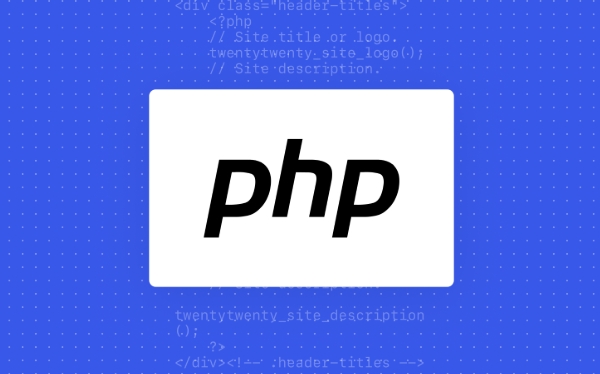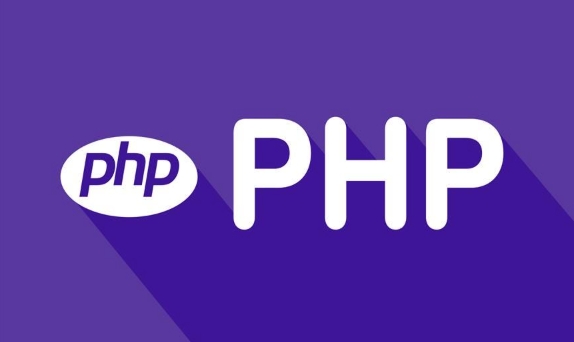 Backend Development
Backend Development
 PHP Tutorial
PHP Tutorial
 Mastering the Fundamentals: A Deep Dive into PHP's Core Principles
Mastering the Fundamentals: A Deep Dive into PHP's Core Principles
Mastering the Fundamentals: A Deep Dive into PHP's Core Principles
Jul 31, 2025 am 11:45 AMPHP runs on the server, processing code and sending HTML to the browser, keeping logic secure but requiring server-side debugging tools. 2. PHP uses dynamic typing, allowing flexible variable types but recommending strict comparisons and input validation to prevent bugs. 3. Control structures like if, switch, and loops (especially foreach) manage code flow, with best practices favoring flat, readable logic. 4. Functions enable reusability, with best practices including single-purpose design, meaningful names, documentation, and cautious use of variable scope. 5. Arrays in PHP are versatile, supporting indexed, associative, and multidimensional forms, and are essential for handling data, with key functions like array_map and array_filter. 6. Superglobals like $_GET, $_POST, $_SESSION, $_COOKIE, and $_SERVER provide global data access but require strict sanitization and validation for security. 7. Effective error handling involves enabling full error reporting in development, using try-catch blocks, custom handlers, and logging, while disabling error display in production. 8. Code organization uses include/require and autoloading (e.g., PSR-4 via Composer) to manage files and classes efficiently, promoting scalability and maintainability. Mastering these fundamentals provides a strong foundation for advancing into frameworks and complex applications.

PHP might not always get top billing in modern web development conversations, but it’s still the backbone of over 75% of websites using server-side programming—including giants like WordPress, Laravel, and Drupal. To truly work efficiently with PHP—whether you're building a simple contact form or a full-stack application—you need a solid grasp of its core principles. Let’s cut through the noise and dive into the fundamentals that make PHP tick.

1. Understanding PHP’s Execution Model
Unlike client-side languages like JavaScript, PHP runs on the server. When a user requests a PHP page, the server processes the script and sends back plain HTML to the browser. This is key: PHP code never reaches the user’s browser.
- The process:
- User requests
page.php - Server executes PHP logic (database queries, calculations, etc.)
- Outputs generated HTML/CSS/JS
- Sends final result to browser
- User requests
This means all your sensitive logic—like database credentials or user validation—can stay secure on the server. But it also means debugging requires tools like var_dump(), error_log(), or Xdebug, since you can’t just open the browser console and see everything.

2. Variables, Types, and Dynamic Typing
PHP is loosely typed, meaning you don’t declare variable types. PHP figures them out at runtime.
$name = "John"; // string $age = 30; // integer $age = "thirty"; // perfectly valid—type changed
This flexibility is powerful but can lead to bugs if you're not careful. For example:

echo "5" 3; // Result: 8 (PHP converts string "5" to int) echo "5a" 3; // Result: 8 too? Actually, "5a" becomes 5
To avoid surprises:
- Use strict comparison (
===) instead of loose (==) - Validate input with
is_string(),is_int(), etc. - Consider enabling
declare(strict_types=1);for function argument type enforcement
3. Control Structures: The Flow of Logic
PHP supports familiar control structures, but knowing when and how to use them effectively matters.
Common patterns:
if / elseif / elsefor conditional branchingswitchfor multiple exact comparisonsfor,while, andforeachfor loops
The foreach loop is especially useful for arrays:
$colors = ['red', 'green', 'blue'];
foreach ($colors as $color) {
echo "Color: $color<br>";
}Pro tip: Use break and continue wisely. Over-nesting loops and conditionals makes code hard to follow. Keep it flat when possible.
4. Functions and Reusability
Functions are the building blocks of reusable code. PHP has thousands of built-in functions (strlen(), array_merge(), json_encode()), but defining your own is where real power lies.
function greet($name, $greeting = "Hello") {
return "$greeting, $name!";
}
echo greet("Alice"); // Output: Hello, Alice!Best practices:
- Keep functions focused (do one thing well)
- Use meaningful names
- Document parameters and return values (PHPDoc helps)
- Leverage default arguments to reduce function overload
And don’t forget variable scope: variables inside functions are local by default. Use global or dependency injection when needed—but sparingly.
5. Working with Arrays: Indexed, Associative, and Multidimensional
Arrays in PHP are more like hybrid data structures—they can be lists and dictionaries.
// Indexed
$fruits = ['apple', 'banana'];
// Associative
$user = [
'name' => 'John',
'age' => 30
];
// Access
echo $user['name']; // JohnUseful array functions:
array_map()– transform each elementarray_filter()– keep elements matching a conditionarray_key_exists()– safer thanisset()for checking keysextract()andcompact()– convert between arrays and variables (use cautiously)
Arrays are central to form handling, database results, and configuration—master them early.
6. Superglobals: PHP’s Built-in Data Hubs
Superglobals are predefined arrays that are always available, no matter the scope. Key ones include:
$_GET– URL parameters (?id=5)$_POST– form data sent via POST$_SESSION– persistent data across pages$_COOKIE– stored client-side data$_SERVER– server/environment info
Example: Handling a login form
if ($_POST['submit']) {
$username = $_POST['username'];
$password = $_POST['password'];
// Validate and authenticate...
}?? Security note: Never trust superglobals. Always sanitize and validate input using:
filter_var()for emails, URLshtmlspecialchars()to prevent XSS- Prepared statements for SQL to avoid injection
7. Error Handling and Debugging
PHP has several error levels: E_NOTICE, E_WARNING, E_ERROR, and E_DEPRECATED. By default, some errors don’t halt execution, which can hide bugs.
Enable better error reporting during development:
ini_set('display_errors', 1);
error_reporting(E_ALL);Use:
try-catchblocks with exceptions- Custom error handlers for logging
error_log()to write to server logs
And always turn off display_errors in production—don’t expose internals to users.
8. The Role of Includes and Autoloading
You don’t write everything in one file. PHP lets you split code with:
include/require– insert external filesinclude_once/require_once– prevent duplicates
For object-oriented projects, autoloading is essential. PSR-4 autoloading (via Composer) means you don’t have to manually include every class:
// composer.json
"autoload": {
"psr-4": { "App\\": "src/" }
}Then App\User automatically loads from src/User.php.
Final Thoughts
Mastering PHP isn’t about memorizing every function—it’s about understanding how the language works under the hood. The core principles—server execution, dynamic typing, superglobals, arrays, and reusability—are the foundation of everything else.
Once you’re comfortable here, moving into object-oriented PHP, frameworks like Laravel, or API development becomes much smoother.
Basically, if you get these fundamentals right, the rest follows.
The above is the detailed content of Mastering the Fundamentals: A Deep Dive into PHP's Core Principles. For more information, please follow other related articles on the PHP Chinese website!

Hot AI Tools

Undress AI Tool
Undress images for free

Undresser.AI Undress
AI-powered app for creating realistic nude photos

AI Clothes Remover
Online AI tool for removing clothes from photos.

Clothoff.io
AI clothes remover

Video Face Swap
Swap faces in any video effortlessly with our completely free AI face swap tool!

Hot Article

Hot Tools

Notepad++7.3.1
Easy-to-use and free code editor

SublimeText3 Chinese version
Chinese version, very easy to use

Zend Studio 13.0.1
Powerful PHP integrated development environment

Dreamweaver CS6
Visual web development tools

SublimeText3 Mac version
God-level code editing software (SublimeText3)

Hot Topics
 Crafting Interactive Web Experiences: An Introduction to PHP's Power
Jul 26, 2025 am 09:52 AM
Crafting Interactive Web Experiences: An Introduction to PHP's Power
Jul 26, 2025 am 09:52 AM
PHPremainsapowerfulandaccessibleserver-sidelanguageforcreatinginteractivewebexperiencesbecauseitenablesdynamiccontentgeneration,userauthentication,andreal-timedatahandling;1)itiseasytolearnandwidelysupported,integratingdirectlywithHTMLandmosthostingp
 Building Your First Dynamic Web Page: A Practical PHP Primer
Jul 29, 2025 am 04:58 AM
Building Your First Dynamic Web Page: A Practical PHP Primer
Jul 29, 2025 am 04:58 AM
Install XAMPP/MAMP or use PHP built-in server and make sure the file is saved as a .php extension; 2. Use display the current time in hello.php; 3. Get user input through $_GET in greet.php and use htmlspecialchars() to prevent XSS; 4. Use include'header.php'; multiplex the page header; 5. Enable error reports during development, variables start with $, use arrays to store data, and always filter user input. You have created a dynamic web page that can respond to user input, display dynamic content and reuse code. This is a key step towards a complete web application. You can connect to the database or build a login system in the future, but you should be sure of yourself at this time.
 Beyond the Basics: Unlocking Web Dynamics with PHP
Jul 25, 2025 pm 03:01 PM
Beyond the Basics: Unlocking Web Dynamics with PHP
Jul 25, 2025 pm 03:01 PM
PHPenablesdynamiccontentgenerationbasedonusercontextbyleveragingsessions,geolocation,andtime-basedlogictodeliverpersonalizedexperiencessecurely.2.ItmanagesstateinHTTP’sstatelessenvironmentusing$_SESSIONandcookies,withenhancedsecuritythroughsessionreg
 Server-Side Scripting Demystified: A Hands-On Introduction to PHP
Jul 27, 2025 am 03:46 AM
Server-Side Scripting Demystified: A Hands-On Introduction to PHP
Jul 27, 2025 am 03:46 AM
PHPisaserver-sidescriptinglanguageusedtocreatedynamicwebcontent.1.Itrunsontheserver,generatingHTMLbeforesendingittothebrowser,asshownwiththedate()functionoutputtingthecurrentday.2.YoucansetupalocalenvironmentusingXAMPPbyinstallingit,startingApache,pl
 Decoding the Server-Side: Your First Steps into PHP's Architecture
Jul 27, 2025 am 04:28 AM
Decoding the Server-Side: Your First Steps into PHP's Architecture
Jul 27, 2025 am 04:28 AM
PHP runs on the server side. When the user requests the page, the server executes the code through the PHP engine and returns HTML to ensure that the PHP code is not seen by the front end. 1. Request processing: Use $_GET, $_POST, $_SESSION, $_SERVER to obtain data, and always verify and filter inputs to ensure security. 2. Separation of logic and display: Separate data processing from HTML output, use PHP files to process logic, and template files are responsible for displaying, improving maintainability. 3. Automatic loading and file structure: Configure PSR-4 automatic loading through Composer, such as "App\":"src/", to automatically introduce class files. Suggested projects
 The Genesis of a Web Application: A Primer on PHP and MySQL
Jul 28, 2025 am 04:38 AM
The Genesis of a Web Application: A Primer on PHP and MySQL
Jul 28, 2025 am 04:38 AM
To start building a web application, first use PHP and MySQL to build a local environment and create a user registration system. 1. Install XAMPP and other integrated environments, start Apache and MySQL services; 2. Create database and users table in phpMyAdmin, including fields such as id, username, password, etc.; 3. Write an HTML registration form and submit data to register.php; 4. Use PDO to connect to MySQL in register.php, insert data through prepared statement, and encrypt password with password_hash; 5. Handle errors such as duplicate username. This way you can master the server
 The Cornerstone of the Web: A Foundational Guide to PHP Scripting
Jul 25, 2025 pm 05:09 PM
The Cornerstone of the Web: A Foundational Guide to PHP Scripting
Jul 25, 2025 pm 05:09 PM
PHPstillmattersinmodernwebdevelopmentbecauseitpowersover75%ofwebsitesusingserver-sidelanguages,includingWordPress(43%ofallwebsites),andremainsessentialforbuildingdynamic,database-drivensites.1)PHPisaserver-sidescriptinglanguagecreatedin1995tomakestat
 PHP Unveiled: A Journey from Core Syntax to Modern Web Applications
Jul 30, 2025 am 05:38 AM
PHP Unveiled: A Journey from Core Syntax to Modern Web Applications
Jul 30, 2025 am 05:38 AM
PHPremainsrelevanttodaybecauseithasevolvedfrombasicscriptingtoamodern,framework-drivenlanguagecapableofbuildingscalablewebapplications;1.Coresyntaxincludesvariables,controlstructures,functions,arrays,andsuperglobalsforhandlingrequests;2.Object-orient





